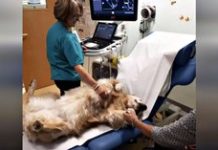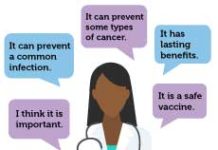In a phase I, dose-escalation study, MCARH109, a GPRC5D-targeted CAR T-cells product, was administered at four dose levels to patients with heavily pretreated multiple myeloma, including also patients with relapse after BCMA CAR T-cells treatment. A maximum tolerated dose of 150×106 CAR T-cells has been defined. At the highest dose evaluated, 450×106 CAR T-cells, 1 patient had grade 4 cytokine release syndrome (CRS) and immune effector cell–associated neurotoxicity syndrome (ICANS), and 2 patients had a grade 3 cerebellar disorder of unclear cause. A high likelihood of response was observed across all dose levels and in particular among patients with limited or no other treatment options. The findings are published by Dr. Renier Brentjens of the Department of Medicine, Roswell Park Comprehensive Cancer Center in Buffalo, NY, US and colleagues on 29 September 2022 in The New England Journal of Medicine.
The authors wrote in the background that studies with BCMA CAR T-cells have shown deep responses in patients with advanced multiple myeloma, with promising rates and durations of response. These results led to approval by the US Food and Drug Administration of idecabtagene vicleucel and ciltacabtagene autoleucel for the treatment of relapsed or refractory multiple myeloma in patients receiving four or more previous lines of treatment. However, BCMA-directed CAR T-cells have not generated survival curves with a plateau and most patients with multiple myeloma are likely to have an eventual relapse. Patients who have a relapse after BCMA-directed treatment have limited options, and treatments with new targets or mechanisms of action are needed.
GPRC5D receptor is expressed in several myeloma cell lines and in bone marrow plasma cells from patients with multiple myeloma. Substantial expression in normal tissue is limited to plasma cells, and low expression is seen in a subset of cells in the hair follicles of the skin and hard keratinising tissue. Based on promising preclinical results, including activity in a BCMA antigen escape model, the study team designed a phase I dose-escalation study of MCARH109, a second-generation CAR T-cell treatment with a human B-cell–derived GPRC5D single-chain variable fragment, a 4-1BB costimulatory domain, and a CD3ζ signaling domain.
In this open-label, phase I study conducted at Memorial Sloan Kettering Cancer Center, MCARH109 was administered at four dose levels to patients with heavily pretreated multiple myeloma, including patients with relapse after BCMA CAR T-cells treatment. A total of 17 patients were enroled and received MCARH109.
The maximum tolerated dose was identified at 150×106 CAR T-cells. At the 450×106 CAR T-cell dose, 1 patient had grade 4 CRS and ICANS, and 2 patients had a grade 3 cerebellar disorder of unclear cause. No cerebellar disorder, ICANS of any grade, or CRS of grade 3 or higher occurred in the 12 patients who received doses of 25×106 to 150×106 CAR T-cells. The authors commented that occurrence of cerebellar symptoms will require additional studies to better understand the cause and management. The exact cause is unclear, but could possibly be related to low-level expression of GPRC5D in the cerebellum or the inferior olivary nucleus.
As expected, on the basis of normal tissue expression, on-target, off-tumour side effects included transient rash, dysgeusia, and nail changes, all of which were limited to grade 1 or 2 events. As compared with the bispecific GPRC5D T-cell engager therapy (talquetamab), the frequency and severity of rash and dysgeusia were lower with MCARH109. Nail changes seen with MCARH109 were also largely reversible and did not lead to intervention.
A response was reported in 71% of the patients in the entire cohort and in 58% of those who received doses of 25×106 to 150×106 CAR T-cells. The patients who had a response included those who had received previous BCMA treatment; responses were observed in 7 of 10 such patients in the entire cohort and in 3 of 6 such patients who received 25×106 to 150×106 cells.
The authors commented that their results support the GPRC5D as a new and effective target for the immunotherapy of multiple myeloma, consistent with the results reported for talquetamab, a bispecific T-cell engager targeting GPRC5D. As an additional new target in multiple myeloma, GPRC5D offers the opportunity to explore several questions, including the role of targeting alternate antigens as opposed to sequential BCMA-directed treatments in patients with relapse after BCMA-directed treatment and the role of BCMA- and GPRC5D-directed combination treatments to target low-antigen-density reservoirs of relapse and induce deeper and longer durations of response.
A multi-institutional study of GPRC5D-targeted CAR T-cells treatment is currently enroling patients.
The study was funded by Juno Therapeutics/Bristol Myers Squibb.
Reference
Mailankody S, Devlin SM, Landa J, et al. GPRC5D-Targeted CAR T Cells for Myeloma. N Engl J Med 2022;387:1196-1206.







